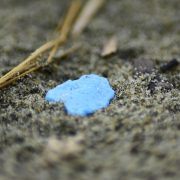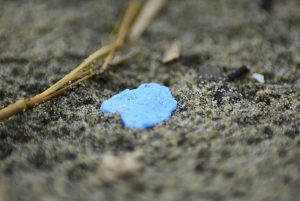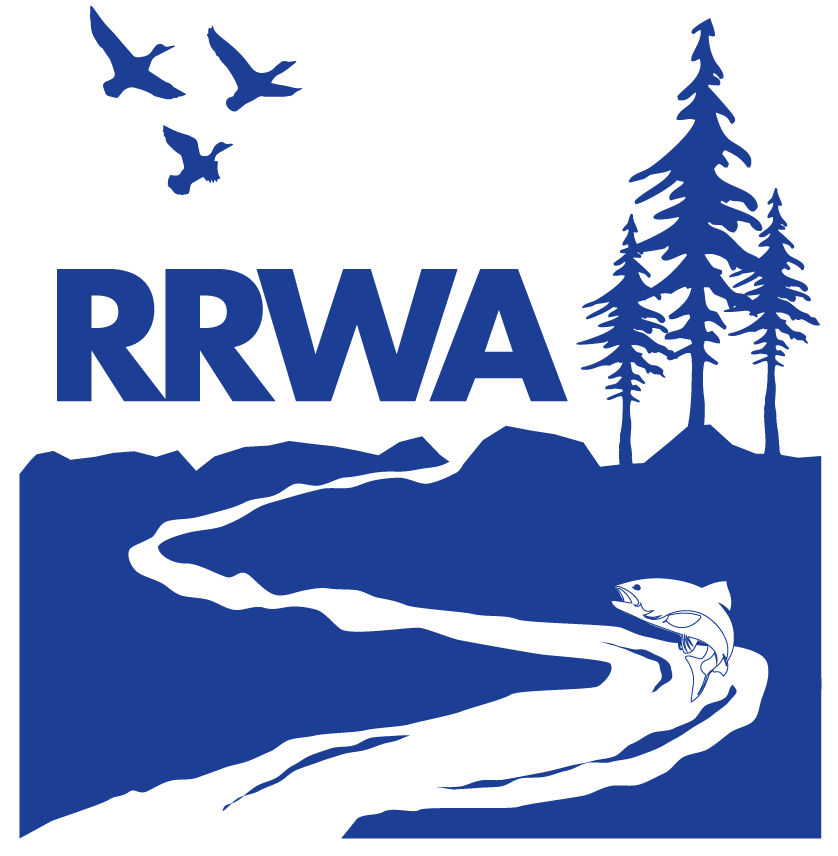Six Simple Tips for Growing the Garden of Your Dreams!
Growing a garden may seem mysterious to some, however by implementing a few tricks of the trade, you can grow the garden of your dreams. Here are six simple tips that will guide you along the way to success.
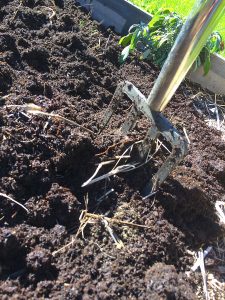
Photo credit: Suzanne Bontempo, Plant Harmony.
- It all starts with the soil. By simply increasing the health of your soil you are increasing the longevity of your plants plus reducing pest problems. By amending your soil with good quality compost, either homemade or purchased from your local garden center, you are encouraging healthy root development, increasing the soil microbiology (all of the living organisms within the soil), aiding in nutrient retention, improving the soil structure AND improving the water holding capacity. It is a win-win when you amend your soil with compost.
- Feed your plants organic fertilizers. By feeding your plants with organic fertilizers instead of synthetic fertilizer, you are increasing the health of your plants, as well as reducing the conditions which create pest problems. Synthetic fertilizers produce rapid growth spurts to the plants. This produces tender, vulnerable new growth which is highly susceptible to insect and disease problems. Also, synthetic fertilizers are high in salts, which over time diminishes the quality of your soil and ability to grow healthy plants.Organic fertilizers produce slow, strong, steady growth. Organic fertilizers also develop a symbiotic relationship between beneficial bacteria and fungi that increase the nutrient uptake for the root systems of your plants. Organic fertilizers are truly a sustainable food for your plants.
- The Magic of Mulch! There are so many benefits to using mulch around your garden. Mulch is used to protect the soil and add a nice finishing touch to the garden. Not only does it look lovely, but can significantly reduce soil water evaporation, which means you don’t need to water as often. Mulch also adds nutrients to the soil as it breaks down and helps to suppress weeds. It protects the soil by keeping it cool in the summer and warm in the winter. Mulch reduces erosion and deterioration of the soil. It also provides habitat for many of our beneficial insects, such as ladybugs.
- Know your Plant and Know it’s Needs. Planting the right plant in the right place will lead to success. It is important to know how the sun moves through your garden so that you can plant sun lovers in the sun and shade lovers in the shade. It is also important to understand how big the plant will be at maturity, so that it doesn’t outgrow its location. Grouping plants together with similar water needs is also ideal for the long‑term health of the plant.
- Water deeply. Watering deeply encourages the roots to grow deeply. As the plant matures, begin to water deeper and less often, allow the top few inches of the soil to dry out between watering. This is the best technique for your perennials, trees and shrubs as they become established.
-
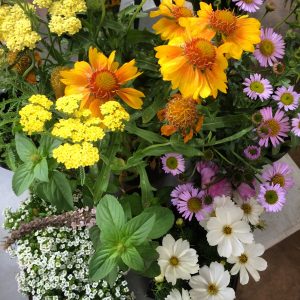
Photo credit: Suzanne Bontempo, Plant Harmony.
Plant it and they will come! By adding a variety of flowering plants, you can attract the beneficial insect that create balance within the garden. Include plants with small clusters of flowers such as; yarrow, ceanothus, alyssum, and agastache, or plants that look like a daisy or sunflower such as; cosmos, asters, gaillardia, and echinacea. These are plants that attract and support our beneficial insects. When we grow a diversity of flowering plants, we attract a diversity of beneficial insects, which will manage our harmful pest.
For more information about attracting beneficials to your garden, check out these two brochures from the Our Water Our World website, OurWaterOurWorld.org:
The 10 Most Wanted Bugs in Your Garden and the Planting a Healthy Garden fact sheet.
Our Water, Our World helps residents manage their home and garden pests in a way that helps protect our watershed. The program provides information about Integrated Pest Management (IPM) to consumers in nurseries and hardware stores. RRWA is proud to offer the Our Water, Our World program at sixteen stores in the Russian River watershed. For a list of locations visit www.rrwatershed.org/project/our-water-our-world.
For fact sheets suggesting methods to manage specific pests using the least toxic methods, product guides to less toxic products for managing common pests, and more, visit OurWaterOurWorld.org
This article was authored by Suzanne Bontempo of Plant Harmony, on behalf of RRWA. RRWA (www.rrwatershed.org) is an association of local public agencies in the Russian River Watershed that have come together to coordinate regional programs for clean water, habitat restoration, and watershed enhancement.

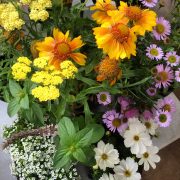
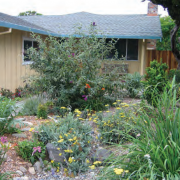
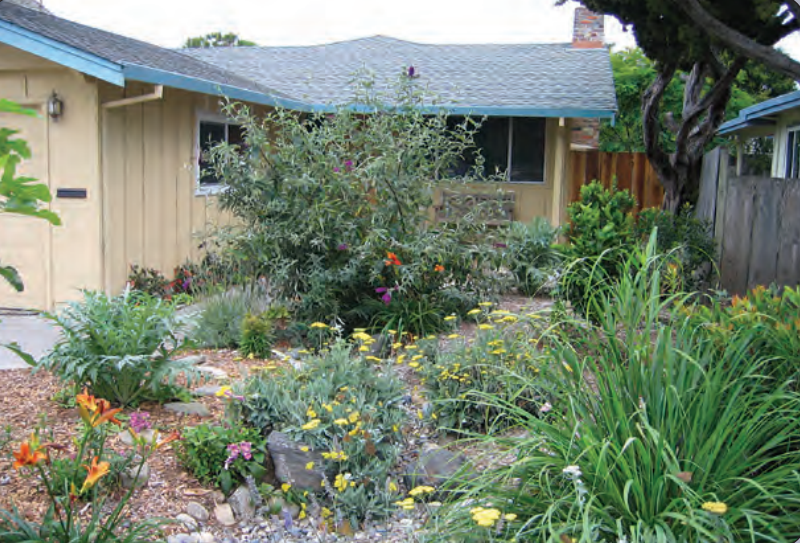
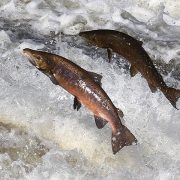

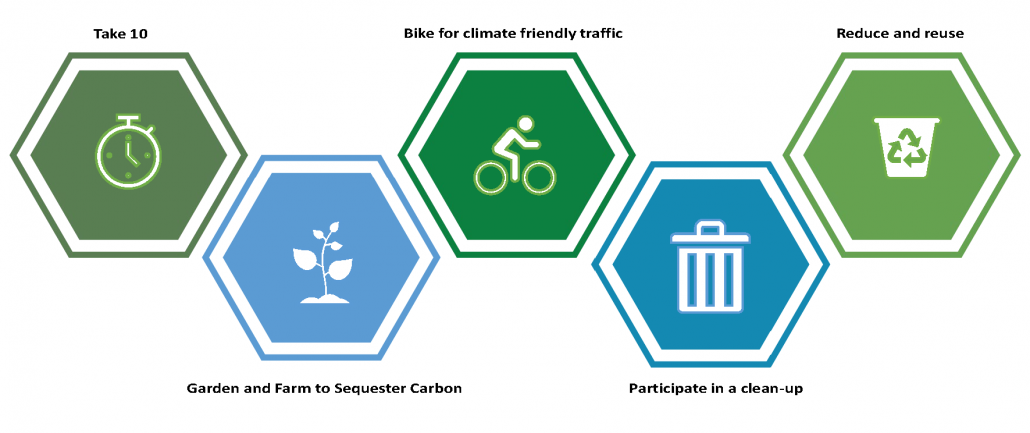
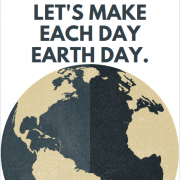
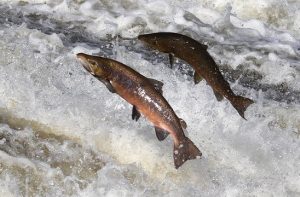 It’s hard to imagine the Russian River without salmon or steelhead. These iconic fish were a major food supply for indigenous people and early settlers. They once gave the river the reputation as a world-renowned fly-fishing destination, are a critical link in the riparian food web – and are spectacularly beautiful.
It’s hard to imagine the Russian River without salmon or steelhead. These iconic fish were a major food supply for indigenous people and early settlers. They once gave the river the reputation as a world-renowned fly-fishing destination, are a critical link in the riparian food web – and are spectacularly beautiful.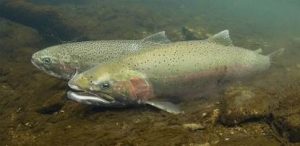 The Biological Opinion focuses on three areas of improvement: Habitat enhancement in Dry Creek (which carries water from Lake Sonoma to the Russian River); the development of a lagoon management program for the estuary (where the river meets the Pacific Ocean in Jenner and where there is plentiful food and habitat for young steelhead before they head to sea); and lowering river flows to provide better habitat for coho and steelhead (releases from Lake Sonoma and Lake Mendocino can sometimes result in water that moves too swiftly for the young, small fish).
The Biological Opinion focuses on three areas of improvement: Habitat enhancement in Dry Creek (which carries water from Lake Sonoma to the Russian River); the development of a lagoon management program for the estuary (where the river meets the Pacific Ocean in Jenner and where there is plentiful food and habitat for young steelhead before they head to sea); and lowering river flows to provide better habitat for coho and steelhead (releases from Lake Sonoma and Lake Mendocino can sometimes result in water that moves too swiftly for the young, small fish).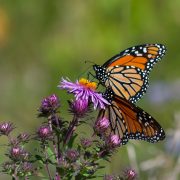
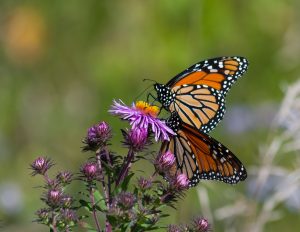 One morning last summer, as I watched a pair of butterflies flying from bloom to bloom on a butterfly bush, I realized I hadn’t seen a Monarch Butterfly in years. I did some research and learned some distressing news.
One morning last summer, as I watched a pair of butterflies flying from bloom to bloom on a butterfly bush, I realized I hadn’t seen a Monarch Butterfly in years. I did some research and learned some distressing news. The honeybee pollinates about one-third of our food crops. Honeybees have also been in decline for years with the current population of honeybees estimated at less than half what it was in the 1940s. In 2006, scientists discovered what they call Colony Collapse Disorder. Colony Collapse Disorder occurs when a colony’s worker bee population suddenly disappears. Hives cannot survive without their worker bees, so eventually, the entire hive dies.
The honeybee pollinates about one-third of our food crops. Honeybees have also been in decline for years with the current population of honeybees estimated at less than half what it was in the 1940s. In 2006, scientists discovered what they call Colony Collapse Disorder. Colony Collapse Disorder occurs when a colony’s worker bee population suddenly disappears. Hives cannot survive without their worker bees, so eventually, the entire hive dies.
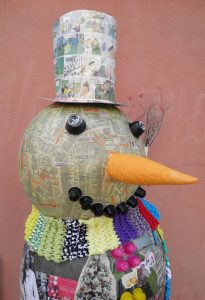 America is a disposable nation. Each person, on average, produces more than 1,600 pounds of trash each year. In total, over 230 million tons of trash accumulates in landfills yearly in the United States. Growing up you have likely been taught to help reduce your waste by practicing the 3 R’s: Reduce, Reuse and Recycle. Have you ever thought about what those terms really mean? Did you know that there are actually three more R’s that we can practice to help make the planet healthier? To help reduce our impact on the environment, it’s time to practice the 6 R’s: Refuse, Reduce, Reuse, Repair, Recycle and Rot.
America is a disposable nation. Each person, on average, produces more than 1,600 pounds of trash each year. In total, over 230 million tons of trash accumulates in landfills yearly in the United States. Growing up you have likely been taught to help reduce your waste by practicing the 3 R’s: Reduce, Reuse and Recycle. Have you ever thought about what those terms really mean? Did you know that there are actually three more R’s that we can practice to help make the planet healthier? To help reduce our impact on the environment, it’s time to practice the 6 R’s: Refuse, Reduce, Reuse, Repair, Recycle and Rot.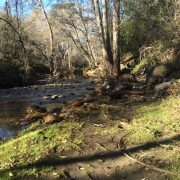
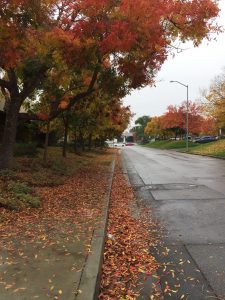 I have been responding to spills in the City of Santa Rosa for the last 17 years. This includes responding to and abating vehicle leaks in the street, wash water from businesses, rinsate from painting equipment, concrete spatter and washout from contractors, and even blowing of leaves and yard waste into the street. All of these and anything other than rain water flowing into a storm drain inlet is prohibited by City and County Codes. Inspectors like me are tasked with going out to stop the discharge and working with the responsible person to clean-up any material (pollutant) from the street and storm drain pipe. When responding to any incident, our primary objective is to protect our valuable natural resources throughout Sonoma and Mendocino Counties. The Russian River watershed is a rich and diverse region of nearly 1,500 square miles and is home to approximately 360,000 people, 238 streams and creeks, and 63 species of fish – three of which are listed as threatened or endangered.
I have been responding to spills in the City of Santa Rosa for the last 17 years. This includes responding to and abating vehicle leaks in the street, wash water from businesses, rinsate from painting equipment, concrete spatter and washout from contractors, and even blowing of leaves and yard waste into the street. All of these and anything other than rain water flowing into a storm drain inlet is prohibited by City and County Codes. Inspectors like me are tasked with going out to stop the discharge and working with the responsible person to clean-up any material (pollutant) from the street and storm drain pipe. When responding to any incident, our primary objective is to protect our valuable natural resources throughout Sonoma and Mendocino Counties. The Russian River watershed is a rich and diverse region of nearly 1,500 square miles and is home to approximately 360,000 people, 238 streams and creeks, and 63 species of fish – three of which are listed as threatened or endangered.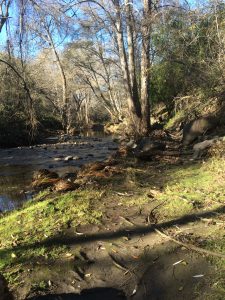 Healthy creeks are an important part of the ecological and social fabric of our local communities. They are part of the identity of living in Sonoma and Mendocino Counties. Studies have shown that the awe‑inspiring feeling of being in and a part of nature has a healing effect on people.
Healthy creeks are an important part of the ecological and social fabric of our local communities. They are part of the identity of living in Sonoma and Mendocino Counties. Studies have shown that the awe‑inspiring feeling of being in and a part of nature has a healing effect on people.